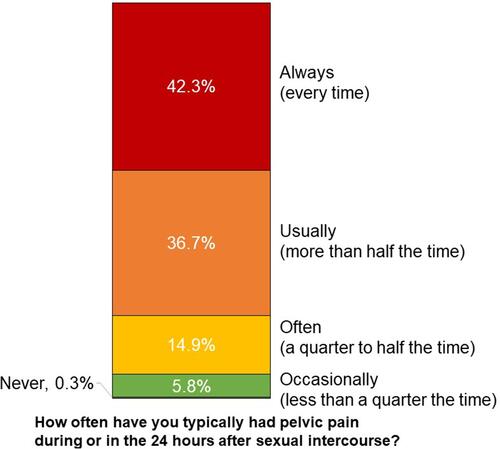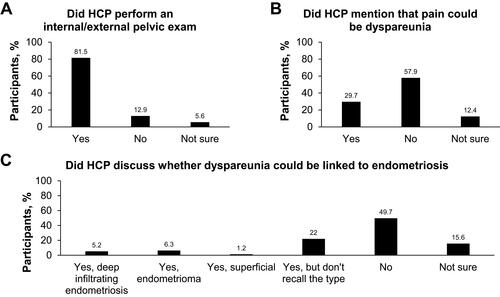Figures & data
Table 1 Baseline Demographics and Characteristics
Figure 1 Frequency of pelvic pain related to sexual intercourse. Respondents were asked to describe the frequency of pelvic pain during or in the 24 hours after sexual intercourse.

Figure 2 Severity of pelvic pain at its worst during sexual intercourse. Respondents were asked to rate their worst pain during sexual intercourse on a scale from 0 (no pain) to 10 (worst imaginable pain).

Figure 3 Impact of dyspareunia on various aspects of patients’ lives. Respondents were asked to indicate how much they agreed or disagreed their endometriosis interfered with sexual intercourse, their relationships, and family plans.

Figure 4 Experience with dyspareunia diagnosis. Women were asked (A) if their practitioner conducted a pelvic examination during the process of identifying the source of their pain, (B) if the pain they felt during sexual intercourse could be the medical condition dyspareunia, and (C) whether their practitioner discussed that their painful sexual intercourse could be linked to a certain type of endometriosis.

